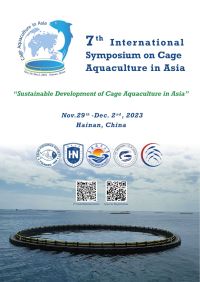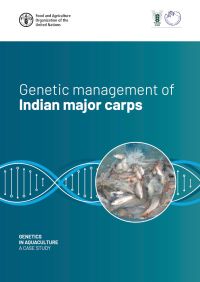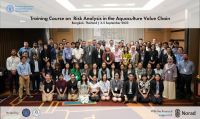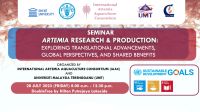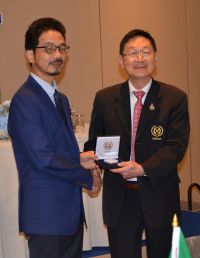CAA7 will be held in Hainan, China, from 29 November to 2 December, with an option for online participation via Zoom for people that cannot attend in person. The theme of the symposium is "Sustainable development of cage aquaculture in Asia". Sessions will be held on: Production systems; breeding and seed production; nutrition and feed; carbon sink and fouling organisms; health and environmental management; economics, gender, livelihood and policy.
The symposium is organised by the Asian Fisheries Society, Hainan University, Shanghai Ocean University, and the China-ASEAN "Belt and Road" Joint Laboratory of Mariculture Technology, Center for Ecological Aquaculture.
Collectively carps represent the largest global aquaculture sector, contributing over 20 percent of global aquaculture production. The Indian major carps including catla (Catla catla), rohu (Labeo rohita) and mrigal (Cirhinnus mrigala) are cultured widely across the Indian sub-continent with the main culture system being a multi-species polyculture in ponds, often including other carp species. This production sector is supported by major seed supply systems producing over 50 billion seed per annum. This case study analyses genetic management of Indian major carps since they were first domesticated with the development of hypophysation techniques in the 1950s. A review of literature and a survey of common hatchery practices identifies significant problems prevalent in the sector brought about by a lack of application of best practices in genetic management resulting in loss of genetic diversity, inbreeding and uncontrolled hybrid introgression.
Risk analysis is an essential component of a national aquatic organism health strategy. Now widely applied in many fields, risk analysis provides a science-based framework for evaluating hazards, determining the likelihood and extent of potential harms, mitigating risks and guiding policy decisions. Combining risk and value chain analysis provides a risk-based and people-centred approach to managing disease risks and planning control measures for aquaculture systems. FAO organised a training course on Risk Analysis in the Value Chain from 3-5 September in Bangkok, Thailand, in partnership with NACA, INFOFISH, Thailand Department of Fisheries and the ASEAN Network of Aquatic Animal Health Centres. Financial support was provided by the Norwegian Agency for Development Cooperation and Thailand Department of Fisheries.
A Seminar on Artemia research and production was held on 28 July 2023 in Putrajaya, Malaysia, in conjunction with the first meeting of the International Artemia Aquaculture Consortium Steering Committee. Video recordings of the technical presentations are available below. The programme included: NACA's role with the International Artemia Aquaculture Consortium; Brine shrimp Artemia culture and research in Malaysia; Production and use of Artemia in Iran; UGent Laboratory of Aquaculture and Artemia Reference Center; AR-ARC actions towards sustainable utilization of Artemia resources; Artemia pond production: Pros and cons; and Feeding 9 billion by 2050: Embracing Artemia in nourishing a growing world
A highlight of the 32nd Governing Council Meeting in Chiang Mai was the award of the Aziz-Ul Haq Rural Development Medal to NACA by the Centre on Integrated Rural Development for Asia and the Pacific (CIRDAP). The award was presented by Dr Cherdsak Virapat, Director General of CIRDAP on behalf of the CIRDAP Governing Council, which had determined to confer the award at a Special Session of the Executive Committee on 25 May.
The award was granted to NACA “…for its remarkable contributions to rural development through sustainable aquaculture and aquatic resource management programs, policy dialogue and regional cooperation in Asia and the Pacific region and for unwavering support to the CIRDAP mission to promote regional sustainable aquaculture development and resilience to climate challenges.”
